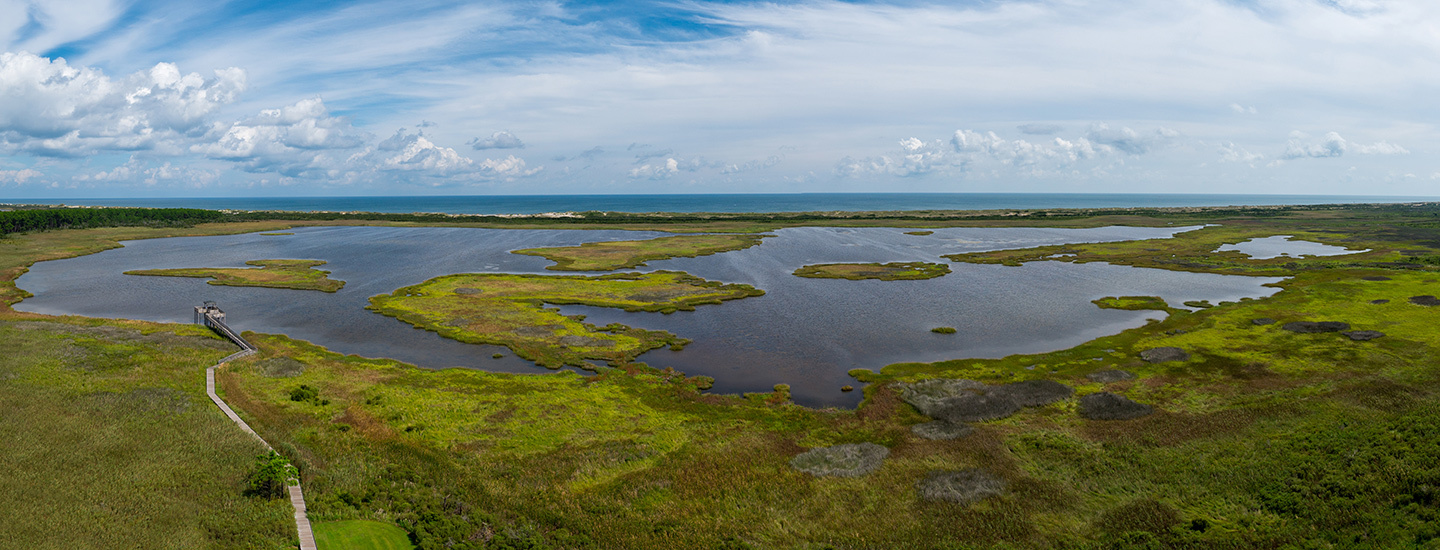
A pending case at the U.S. Supreme Court could have lasting consequences for the scope of the federal Clean Water Act, potentially making it tougher to protect clean water for coastal recreational users. Environmentalists are urging the Supreme Court to uphold the EPA’s authority over important wetland habitats. Sackett v. Environmental Protection Agency (EPA) arises from a long-running dispute over whether federal Clean Water Act jurisdiction extends to the wetlands on the Sackett family’s rural homesite near Priest Lake, Idaho. The Clean Water Act (CWA) establishes the basic framework for regulating the discharge of pollutants into navigable waters and setting water quality standards for surface waters. The CWA defines “navigable waters” as the waters of the United States, a phrase that defines the scope of the federal government’s regulatory jurisdiction under the CWA. If a body of water isn’t considered under CWA jurisdiction polluters don’t need a federal permit to dump harmful chemicals into it, or to fill it in – meaning entire bodies of water and wetlands could be eliminated or compromised. Since the CWA was enacted, agencies and courts have disputed the limits of “waters of the United States.”
In the past three presidential administrations, the EPA and the U.S. Army Corps of Engineers have issued various regulations defining “waters of the United States.” In 2007, during the Bush Administration at the time this controversy arose, the EPA broadly defined “waters of the United States” to include “wetlands adjacent to” traditional navigable waters and their tributaries. These same regulations considered wetlands separated from other “waters of the United States” by man-made barriers as similarly adjacent wetlands.
To the north of the Sackett’s property is the Kalispell Bay Fen, a large wetlands area that drains into an unnamed tributary which feeds into Kalispell Creek, which, in turn, flows southwest of the property and empties into Priest Lake. Priest Lake is 300 feet from the Sackett’s property. In 2007, the family used gravel and sand to fill the lot, prepping it for development. The EPA then issued an administrative compliance order, instructing the Sacketts to remove the fill and return the land to its natural state, on the basis that the land contained wetlands subject to EPA regulation under the CWA. The Sackett family sought judicial review of this order, claiming that the CWA did not give the EPA authority over their land.
Therefore, at issue in the case is the scope of wetlands that are protected by the Clean Water Act. In order to resolve this case, the Supreme Court needs to apply the Rapanos v. United States, 547 U.S. 715 (2006) decision. In Rapanos, the Supreme Court attempted to define the scope of “waters of the United States.” However, the Court’s decision was fractured and no opinion gained support from a majority of the Justices. Justice Scalia rejected the definition of “adjacent wetlands” and concluded that “waters of the United States” extends only to “relatively permanent, standing, or flowing bodies of water” and to wetlands with a “continuous surface connection” to such permanent waters. In a concurring opinion, Justice Kennedy interpreted the Clean Water Act as extending federal jurisdiction over wetlands when there is, “a significant nexus between the wetlands in question and navigable waters in the traditional sense.” This “significant nexus” turns on whether the wetlands significantly affect the chemical, biological, and physical integrity of other navigable waters. In 2019, Surfrider submitted comments to the EPA which support Justice Kennedy’s Rapanos opinion.
Both the U.S. District Court for the District of Idaho and Ninth Circuit upheld the EPA’s authority to regulate the Sacketts’ plot, applying Justice Kennedy’s “significant nexus” standard. However, the Sacketts argue that Justice Scalia’s more restrictive “surface-water connection” test should be applied instead, as it is easier to understand and apply. The Sacketts are asking the Supreme Court for clarity regarding the extent of EPA’s jurisdiction to regulate wetlands under the CWA. The decision will determine a standard for recognizing the extent of EPA’s wetland regulatory jurisdiction, and could open the door for restricting the scope of federal protections for wetlands.
What does this mean?
Should the Supreme Court adopt Justice Scalia’s “surface-water connection” test, the EPA’s jurisdiction over wetlands will be critically limited. Wetlands not only provide critical habitats for diverse aquatic and terrestrial organisms, but are valuable for water quality improvement as they absorb pollutants from surface water, aid in shoreline erosion control, flood protection, and provide endless recreation opportunities such as hiking, boating, hunting, fishing, and birdwatching. By limiting EPA jurisdiction over these necessary natural features, developments like the Sacketts’ will have the ability to critically degrade wetlands. This degradation can increase pollution inputs into our water systems, alter species compositions, deteriorate habitats, and foreclose on recreation opportunities. Loss of wetlands would fundamentally alter a day at the beach, with increasingly polluted waters and increased erosion reducing beach area.
An amicus brief filed by several environmental and community organizations asserts that the Sacketts’ preferred definition ignores the fact that the CWA repeatedly recognizes wetlands as “waters” and by ignoring this, there will be significant negative impacts on the downstream water’s chemical, physical, and biological integrity, thus causing the CWA to not serve as the comprehensive water-quality statute Congress intended. The brief also claims that the Supreme Court has “never curtailed the [CWA’s] protection of waters that significantly affect downstream water quality.”
The Supreme Court granted review of Sackett v. EPA on January 24, 2022. The case is set for argument before the Supreme Court on October 3, 2022. The ruling is highly anticipated, especially on the heels of the Court’s June 30th decision in West Virginia v. EPA, where the court ruled to curtail the EPA’s ability to mandate a shift to energy production from renewable sources. Read more about the West Virginia v. EPA decision here.
